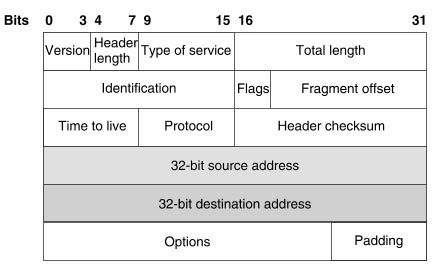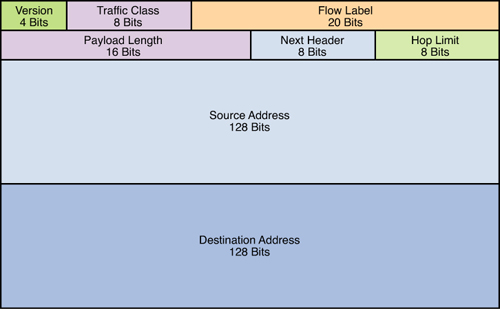ICND1 – IPv6 Questions 2
[am4show have=’p2;’]
Premium Member: You can test your knowledge with these questions first via this link.
[/am4show]
Question 1
[am4show have=’p2;’]Identify the four valid IPv6 addresses. (Choose four)
A. ::
B. ::192:168:0:1
C. 2000::
D. 2001:3452:4952:2837::
E. 2002:c0a8:101::42
F. 2003:dead:beef:4dad:23:46:bb:101
Answer: A B E F[/am4show]
Explanation
Answers B E F are correct because A and B are the short form of 0:0:0:0:192:168:0:1 and 2002:c0a8:0101:0:0:0:0:0042 while C are normal IPv6 address.
Answer A is correct because “::” is named the “unspecified” address and is typically used in the source field of a datagram that is sent by a device that seeks to have its IP address configured.
Answer C is not correct because a global-unicast IPv6 address is started with binary 001, denoted as 2000::/3 in IPv6 and it also known as an aggregatable global unicast address. The 2000:: (in particular, 2000::/3) is just a prefix and is not a valid IPv6 address.
In fact answer D is acceptable but it is considered the network portion of an IPv6 address so it is a worse choice than others.
The entire global-unicast IPv6 address range is from 2000::/128 to 3FFF:FFFF:FFFF:FFFF:FFFF:FFFF:FFFF/128, resulting in a total usable space of over 42,535,295,865,117,307,932,921,825,928,971,000,000 addresses, which is only 1/8th of the entire IPv6 address space!
Question 2
[am4show have=’p2;’]Which two statements describe characteristics of IPv6 unicast addressing? (Choose two)
A. Global addresses start with 2000::/3
B. Link-local addresses start with FE00:/12
C. Link-local addresses start with FF00::/10
D. There is only one loopback address and it is ::1
E. If a global address is assigned to an interface, then that is the only allowable address for the interface.
Answer: A D[/am4show]
Explanation
Below is the list of common kinds of IPv6 addresses:
| Loopback address | ::1 |
| Link-local address | FE80::/10 |
| Site-local address | FEC0::/10 |
| Global address | 2000::/3 |
| Multicast address | FF00::/8 |
From the above table, we learn that A and D are correct while B and C are incorrect. Notice that the IPv6 unicast loopback address is equivalent to the IPv4 loopback address, 127.0.0.1. The IPv6 loopback address is 0:0:0:0:0:0:0:1, or ::1.
E is not correct because of anycast addresses which are indistinguishable from normal unicast addresses. You can think of anycast addresses like this: “send it to nearest one which have this address”. An anycast address can be assigned to many interfaces and the first interface receives the packet destined for this anycast address will proceed the packet. A benefit of anycast addressing is the capability to share load to multiple hosts. An example of this benefit is if you are a Television provider with multiple servers and you want your users to use the nearest server to them then you can use anycast addressing for your servers. When the user initiates a connection to the anycast address, the packet will be routed to the nearest server (the user does not have to specify which server they want to use).
Question 3
[am4show have=’p2;’]Which statement is true?
A. An IPv6 address is 64 bits long and is represented as hexadecimal characters.
B. An IPv6 address is 32 bits long and is represented as decimal digits.
C. An IPv6 address is 128 bits long and is represented as decimal digits.
D. An IPv6 address is 128 bits long and is represented as hexadecimal characters.
Answer: D[/am4show]
Question 4
[am4show have=’p2;’]Which statements are TRUE regarding Internet Protocol version 6 (IPv6) addresses? (Choose three)
A. An IPv6 address is divided into eight 16-bit groups.
B. A double colon (::) can only be used once in a single IPv6 address.
C. IPv6 addresses are 196 bits in length.
D. Leading zeros cannot be omitted in an IPv6 address.
E. Groups with a value of 0 can be represented with a single 0 in IPv6 address.
Answer: A B E[/am4show]
Question 5
[am4show have=’p2;’]Which technique can you use to route IPv6 traffic over an IPv4 infrastructure?
A. NAT
B. 6to4 tunneling
C. L2TPv3
D. dual-stack
Answer: B[/am4show]
Explanation
“6to4 tunneling” is a technique which enables encapsulation of IPv6 packets into IPv4 for transport across an IPv4 network.
Question 6
[am4show have=’p2;’]Which header field is new in IPv6?
A. Version
B. Hop Limit
C. Flow Label
D. Traffic Class
Answer: C[/am4show]
Explanation
The IPv4 and IPv6 headers are shown below for your comparison. As we can see the Flow Label, Hop Limit, Traffic Class fields are all new but in fact Hop Limit in IPv6 is same as Time to live (TTL) in IPv4. Traffic Class is the equivalent of the DiffServ/DSCP portion of the IPv4 packet (in “Type of service” field) which carries the QoS markings of the packet. Just like in IPv4 the first 6 bits are designated for the DSCP value, and the next 2 bits are for ECN (Explicit Congestion Notifications) capable devices.
Flow-Label: This 20-bit field provides a special service for real-time applications. It can be used to inform routers and switches to maintain the same path for the packet flow so that packets are not reordered.
 IPv4 Header fields
IPv4 Header fields
 IPv6 Header fields
IPv6 Header fields
IPv6 eliminates the Header Checksum field, which handles error checking in IPv4.
Question 7
[am4show have=’p2;’]Which sequence begins a unique local IPv6 address in binary notation?
A. 1111000
B. 11111000
C. 11111100
D. 11100000
Answer: C[/am4show]
Explanation
A IPv6 Unique Local Address is an IPv6 address in the block FC00::/7. It is the approximate IPv6 counterpart of the IPv4 private address. It is not routable on the global Internet. Therefore FC00::/7 is equivalent to 1111 1100 0000 0000::/7 in binary notation.
Note: In the past, Site-local addresses (FEC0::/10) are equivalent to private IP addresses in IPv4 but now they are deprecated.


Just failed my ICND1 exam. Got 812 and passing was 832. A lot of new questions about IPv6 and cabling.
@Noob can you tell me about the cabling questions ?
@Noob, Please where can we get the cabling questions? Any info
@noob Could you please also share with me the new cabling and IPV6 questions @{email not allowed}. I have my exam on 16th October,2017
in first question why f is included in answer ?
@GKG
Because, it meets the requirements of an IPv6 address.
1. Eight fields (each field of 16 bits – 4 hexadecimal characters) separated by colons.
2. The hexadecimals characteres are OK = Numbers between 0 to 9 and letters between A to F.
3. In some fields there are not 4 characters hexadecimal, because the abbreviation rules for IPv6 addresses were applied. (suppress the continuous zeros to the left).
Hello guys,
The last question has got a wrong answer. The Unique local address always starts with FD so, the answer should be 11111110. Confirmed in https://www.tutorialspoint.com/ipv6/ipv6_address_types.htm# and CCENT/INCD1 100-1015 official certification guide from Cisco
Cheers